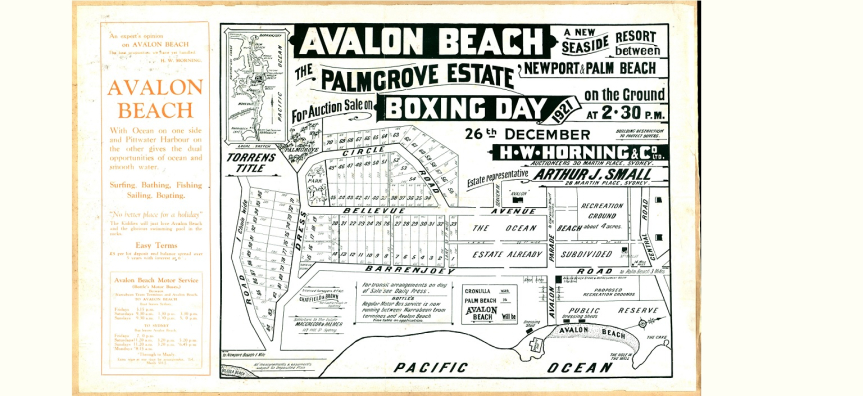Meet some early Avalon trailblazers
2021 marks one hundred years since the suburb of Avalon Beach was originally named.
On 26 December 1921, the ‘Palmgrove Estate’ subdivision, created by Arthur Jabez Small went to auction. This was the first time the suburb name Avalon Beach was used.
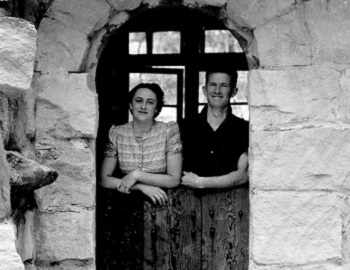
A.J. Small was a major contributor to the development of Avalon and was keen to preserve the beauty of the area.
Some of the early residents of Hilltop Rd, Avalon Beach were also attracted by this natural unspoilt environment. This is captured in a historic photographic record of early residents created by Alan Rigby.
Alan Rigby and his wife Enid purchased land in Hilltop Rd, Avalon in 1935. They were both commercial artists, conservationists and avid bushwalkers.
Alan was also a keen photographer.
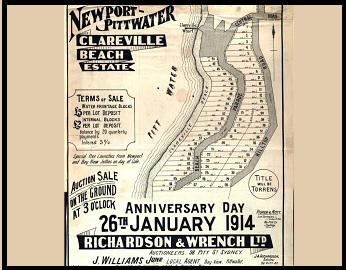
Alan photographed his neighbours and their houses, documenting a unique way of life in the 1930s.
Hilltop Rd lies near the border with the suburb of Clareville Beach.
Real estate subdivisions occurred in this area from the late 1800s and became particularly popular from the 1920s.
The western side of Hilltop Rd was included in the Clareville Beach Estate subdivision of 1914.
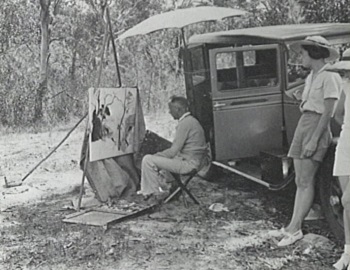
Many of the houses were weekenders as the area was still reasonably isolated due to lack of good roads and public transport. Because of this isolation land was reasonably cheap.
Alan and Enid Rigby were introduced to Avalon by their friends Robert & Olive Johnson, who had bought land in Hilltop Rd in the late 1920s. Robert Johnson was a well-known Landscape Artist.
Robert and Olive Johnson‘s daughter Heather, states that her father was drawn to Avalon as he loved the landscape around the Northern Beaches. He would pack up and paint on the weekends, he particularly loved painting the Pittwater, gum trees and the headlands of Avalon Beach.

The Rigby’s purchased the block of land next door to the Johnsons.
In 1935 local stonemason Charlie Erikson began constructing a stone cottage for the Johnson’s, which they named Ashlar. The following year he also began constructing a stone cottage for the Rigby’s as well.
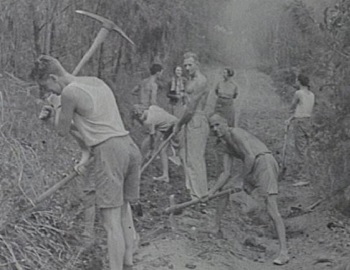
It was a simple life with few services and residents needed to be resourceful particularly in relation to road maintenance.
Warringah Council minutes state that in 1934 Lt Col. E.H. Reynolds, a resident of Chisholm Ave, drew attention to the poor condition of Chisholm Ave & Hilltop Rd. Council decided Chisholm Ave would be rolled with a roller and Hilltop Rd would be graded.
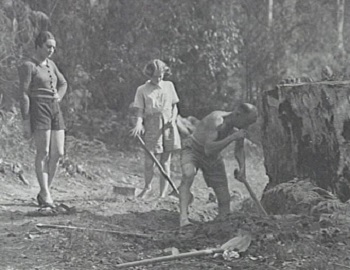
During the late 1930s there were many complaints to Warringah Council about the state of these roads and residents had to take matters into their own hands.
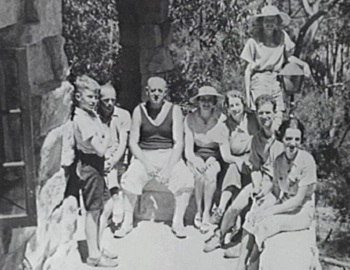
Roger Rigby the eldest son of Alan & Enid says deliveries of any kind were problematic due to the poor state of the road. He remembers there was a large spotted gum tree near the present day Hilltop Rd shops where there was a board attached with hooks and numbers that corresponded to house numbers in the street. The daily routine was to walk down to the end of the street after teatime with a billy can that was hung on a numbered hook with 2 shillings and sixpence inside. The milkman came early the next morning, so they had to fetch the billy can as early as possible in summer before the milk went off.
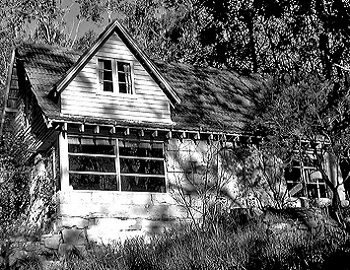
Heather Johnson also recalls bread and ice being delivered down at the bottom of the hill. Refrigeration would have been unusual in the street until the early 1950s. Many houses would have had ice chests which would have required large blocks of ice to be delivered every second or third day.
Another family who were friendly with the Johnson’s and Rigby’s were the Sibley family.
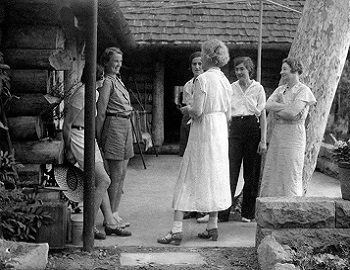
The Sibley family built a log cabin in Hudson Pde Clareville in 1932. They built the cabin with logs so it would gradually become part of the landscape, not spoil it. Mrs Sibley’s aim was to ‘enhance the natural beauties of one of the beauty spots of the world’. (The Sun 11/12/32)
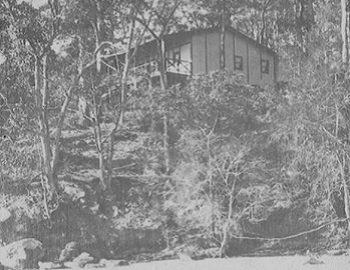
Heather Johnson and her brother Brian became acquainted with other neighbours on Clareville beach in 1932, Yvonne and Christopher Ratte. Their aunt Jeanne Ratte built the cottage ‘Elise’ in Hudson Pde, Clareville in 1920/22. It was built on a block of land subdivided off the block owned by Dr Harriet Biffen who built the first cottage and ‘Elise’ was built to the same plan.
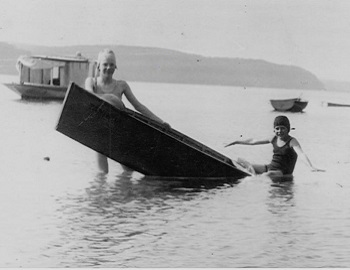
When the Ratte family came to Clareville for the weekend they caught a train from St Leonards to Brooklyn on the Hawkesbury River and then by ferry to Pittwater and Paddens wharf, which was situated near present day Avalon Sailing Club. At the time Clareville Beach was referred to as the ‘Pearl of Pittwater’.
The Johnson and Ratte children lived a carefree life exploring Pittwater together. Yvonne Ratte says they spent their time messing about in boats, rowing, canoeing and sailing. If they capsized there was no one to rescue them as there were few boats around at the time. They would walk to Avalon Beach along a dirt road for a surf, there was only one store and very few people. There was no surf club just a shed with a reel and belt but not always manned.
One day the children had to rescue a visiting Englishman who had become caught in a rip.
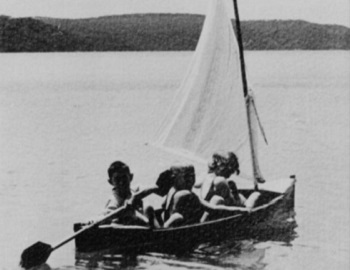
They also assisted with fighting bushfires when their houses were threatened.
Yvonne Ratte recalls “My earliest memories are of the Christmas holidays, no electricity, tank water and my aunt or my mother cooking on a fuel camp oven type stove. The clear water when the high Christmas tides covered the rocks and golden sands where we swam and played. Oysters were gathered from the rocks below the cottage and fish caught. There was plenty of native flora, fauna, including koalas. It truly was a paradise.”

Recollections from Roger Rigby, Heather Johnson & Yvonne Ratte.
If you would like further information, please contact the Northern Beaches Library Local Studies Team at LocalHistory@northernbeaches.nsw.gov.au or visit History Hub.

